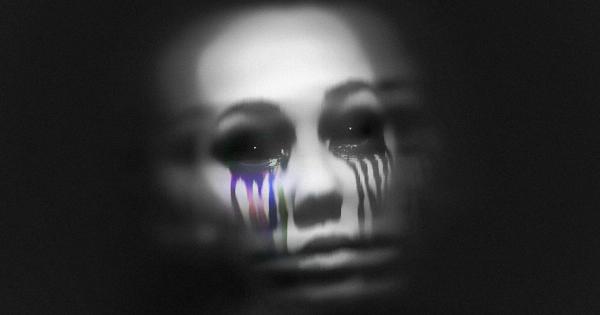Depression is a common and serious mental health condition that can affect people of all ages, including infants. While it may seem surprising, there are early warning signs of depression that can be observed in a baby’s eyes.
Although babies may not express their emotions in the same way as adults, their physical cues can provide valuable insights into their mental well-being. Understanding these signs and being able to recognize them early on can lead to better mental health outcomes for the child.
What is Depression in Babies?
Depression in babies refers to a persistent mood disorder characterized by feelings of sadness, irritability, and a loss of interest or pleasure in activities.
While many people associate depression with adults and older children, it can also occur in infants. These early experiences of depression can have long-term effects on a child’s emotional and cognitive development if left undetected and untreated.
Early Warning Signs in a Baby’s Eyes
The eyes can reveal a wealth of information about a person’s emotions, and babies are no exception. Here are some early warning signs of depression that can be observed in a baby’s eyes:.
1. Lack of Eye Contact
One of the earliest signs of depression in babies is a noticeable decrease in eye contact. Babies with depression may avoid making eye contact with their caregivers or other people around them.
This lack of engagement can indicate a withdrawal from social interaction and a disinterest in the environment.
2. Sad or Empty Expression
Babies with depression may display a consistently sad or empty expression in their eyes. Their eyes may lack the bright and curious gaze commonly seen in healthy infants.
Instead, their eyes may appear dull, lacking the usual sparkle associated with a happy and engaged baby.
3. Excessive Tearing or Crying
Depressed babies may display excessive tearing or crying, often without a clear reason. Their eyes may appear red and swollen from persistent crying. This behavior can be a manifestation of their internal emotional distress.
4. Avoidance of Visual Stimuli
Babies typically have a natural curiosity towards their surroundings and are easily captivated by visual stimuli. However, depressed infants may show a lack of interest or avoidance when exposed to visual stimuli.
Their eyes may appear distant, as if they are not fully engaging with their environment.
5. Unusually Wide or Narrow Pupil Size
Changes in pupil size can also be indicative of depression in infants. While slight variations are normal, depressed babies may consistently have unusually wide or narrow pupils.
These changes can reflect alterations in the brain’s chemistry and the baby’s emotional state.
6. Excessive Blinking
Babies with depression may display excessive blinking or rapid eye movements. These repetitive eye behaviors can be a result of heightened anxiety or emotional distress.
7. Lack of Responsiveness to Caregivers
Depressed babies may exhibit a lack of responsiveness to their caregivers’ attempts to engage with them. They may not follow their caregivers’ faces or respond to their voices.
Their eyes may appear distant and unresponsive, reflecting their emotional detachment.
8. Changes in Sleep Patterns
Depression can significantly affect a baby’s sleep patterns. They may experience difficulty falling asleep, staying asleep, or have disrupted sleep during the night. These changes can be reflected in their eyes, which may appear tired and strained.
9. Decreased Appetite
Depressed babies may also exhibit a decreased appetite, leading to weight loss or slower weight gain. This lack of interest in feeding can be seen through the eyes, which may lack the usual bright and focused gaze.
10. Slowed Eye Movements
Healthy babies typically have quick and active eye movements as they explore their surroundings. In contrast, depressed infants may exhibit slowed eye movements. Their eye tracking may be less coordinated and more sluggish than usual.
Importance of Early Detection
The early detection of depression in babies is crucial for several reasons. Firstly, it enables parents and caregivers to provide the necessary support and interventions to promote the baby’s mental well-being.
Early detection also allows healthcare professionals to address any underlying factors contributing to the baby’s depression and develop a comprehensive treatment plan.
Furthermore, early intervention can help prevent the long-term effects that depression can have on a child’s development.
Prompt identification and treatment can lead to better mental health outcomes, improved emotional regulation, and a reduced risk of developing more severe mental health conditions later in life.
Conclusion
While it may not be widely known, there are early warning signs of depression that can be observed in a baby’s eyes. Recognizing these signs and understanding their significance is essential for early detection and intervention.
By being vigilant and responsive to the subtle cues in a baby’s eyes, parents, caregivers, and healthcare professionals can provide the necessary support and care for optimal mental health outcomes in infants.






























